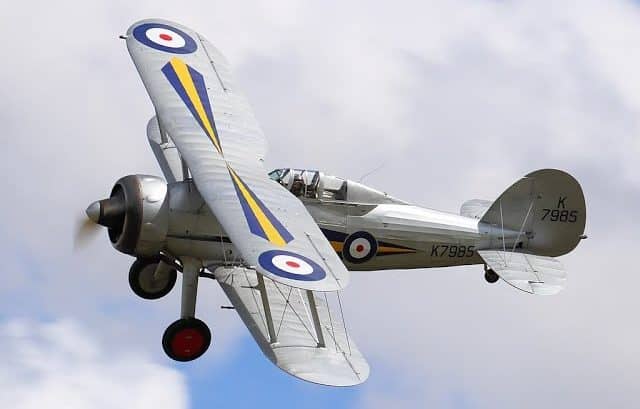When we think about the Battle of Britain, images of Hurricanes and Spitfires often come to mind. What we don’t normally think about are biplanes, flying machines that are more likely associated with WWI, rather than WWII.
However, backing up the Hurricanes and Spitfires are a handful of biplane fighters that are nimble and well-armed Gloster Gladiators – the RAF’s last biplane fighter.
Gloster Gladiator
The plane first entered service in 1937, becoming the last biplane fighter of the RAF. In September 1937, 8 Gladiator squadrons were tasked with the defense of London. Although they might be tricky to land, can stall abruptly, and can quickly enter a flat spin, pilots generally grew to like them.
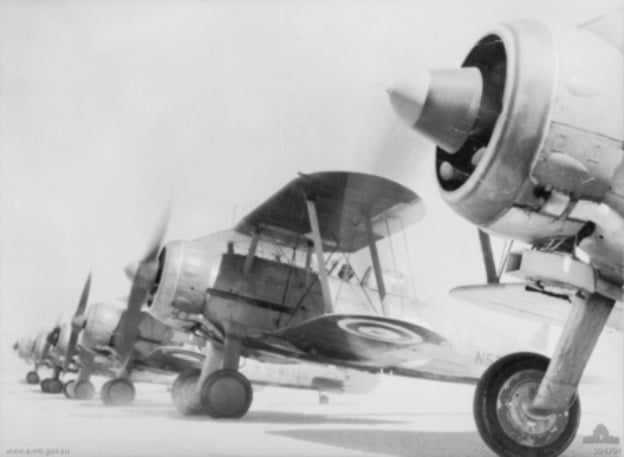
It was powered by a Bristol Mercury IX radial engine that could output 830 hp, which was more than enough for the Gladiator to get to its max speed of 253 mph. Later Gladiators were fitted with four Browning .303 Mk II machine guns on its sides and underwings, while some Sea Gladiators had one more pair installed on top of the wings.
Days Numbered
In 1938, the Spitfire and Hurricane entered frontline RAF service and the Gladiator’s days were numbered. After all, the new hires were more than capable of handling themselves against any threats.
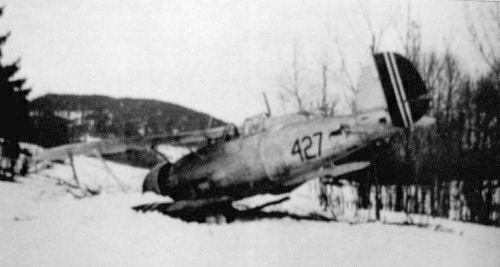
However, some Gladiators still lingered on in the Royal Air Force and the Royal Navy’s fleet air arm.
Last Gladiators
Although completely outclassed, not only by the RAF’s new fighters but also by the Luftwaffe, Britain’s last Gladiators found themselves thrown into combat even though they were no longer fit for “modern war”.
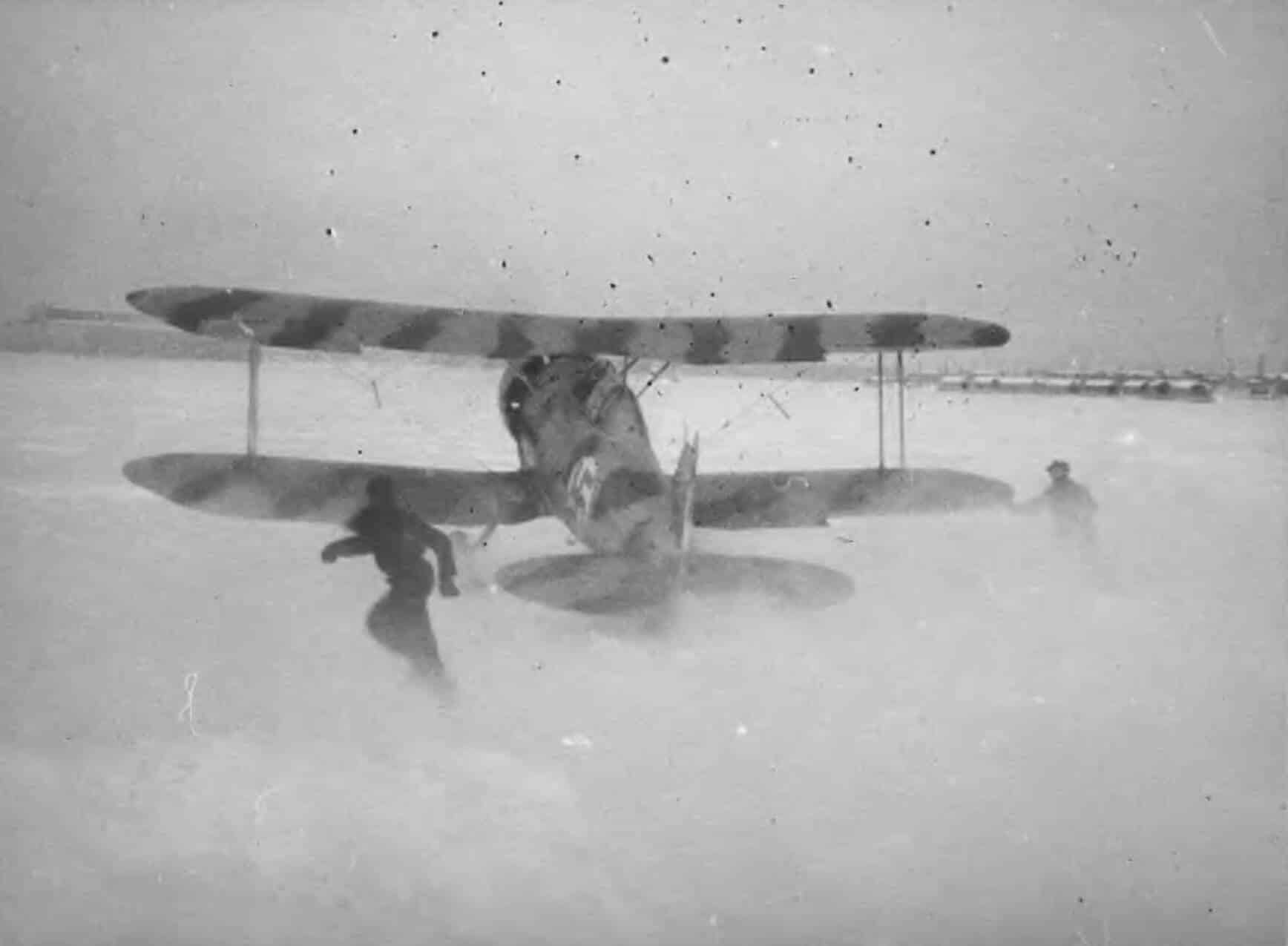
During the Battle of Britain, Gloster Gladiators were in operational service with the 247 Squadron of RAF Roborough. The 239 Squadron and 804 Naval Air Squadron’s Sea Gladiators were also operational during this time.
Gladiator Ace
The top WWII Gladiator ace was Flight Lt. Pat Pattle of the RAF who had 15 and a half confirmed aerial victories in his Gladiator.
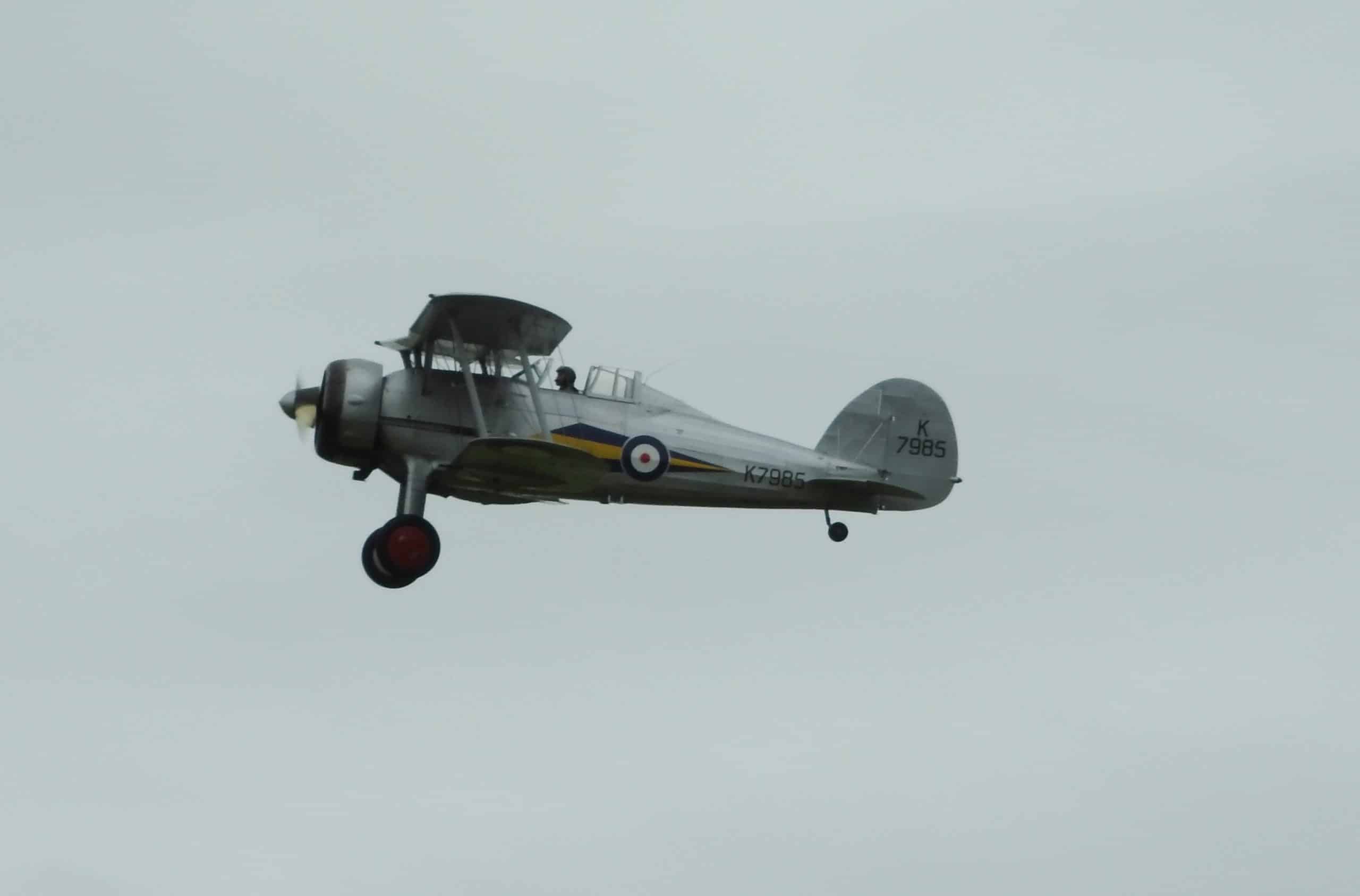
Interestingly, the Luftwaffe also got their hands on some Gladiators – which they also used. Several flying examples were captured from the Latvian Air Force and were used as glider tugs in Germany until 1943.
Gladiators Today
Out of the 747 Gladiators built, 8 complete or partial airframes still exist in museums. In fact, two Gladiators are still deemed airworthy in the UK today!


